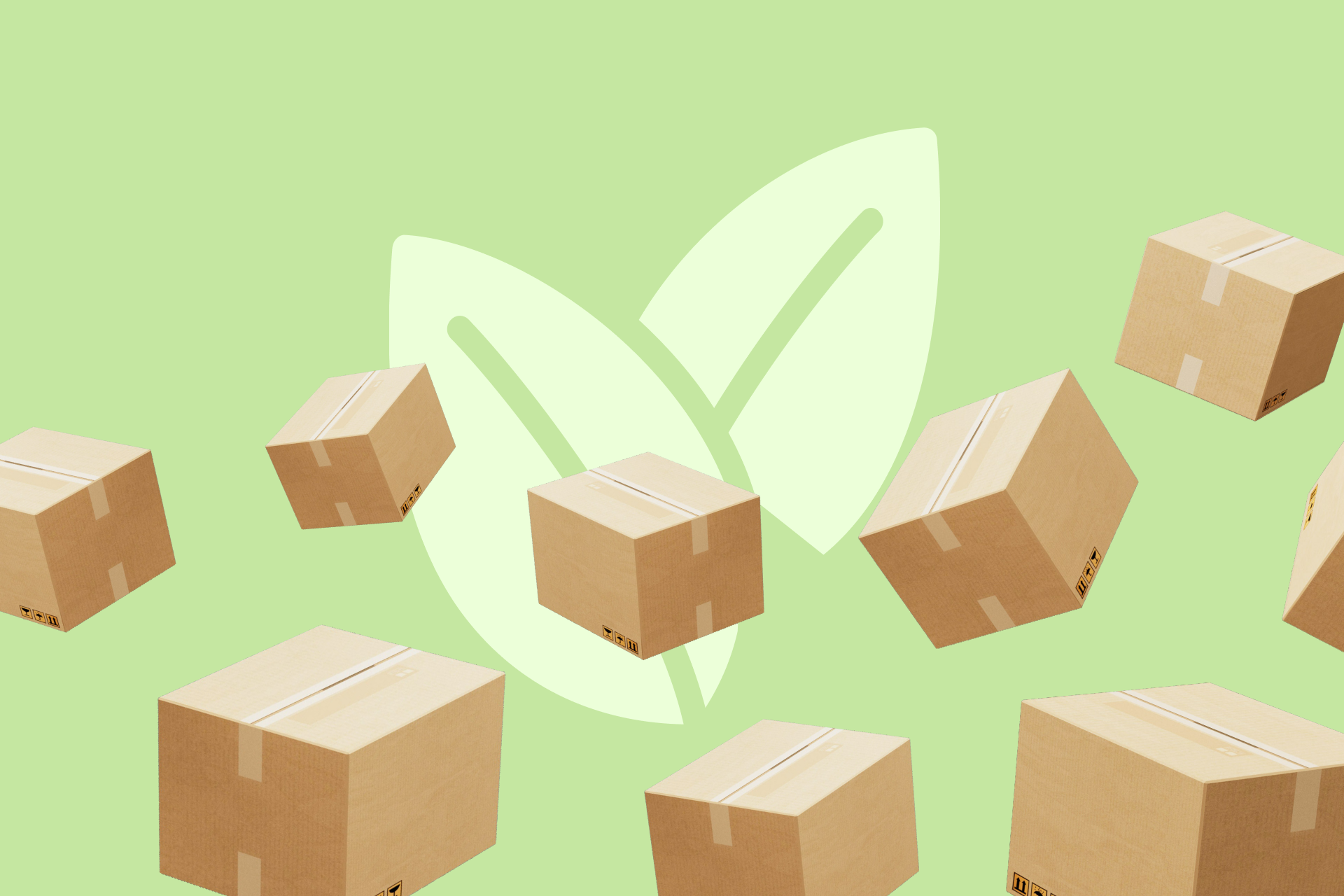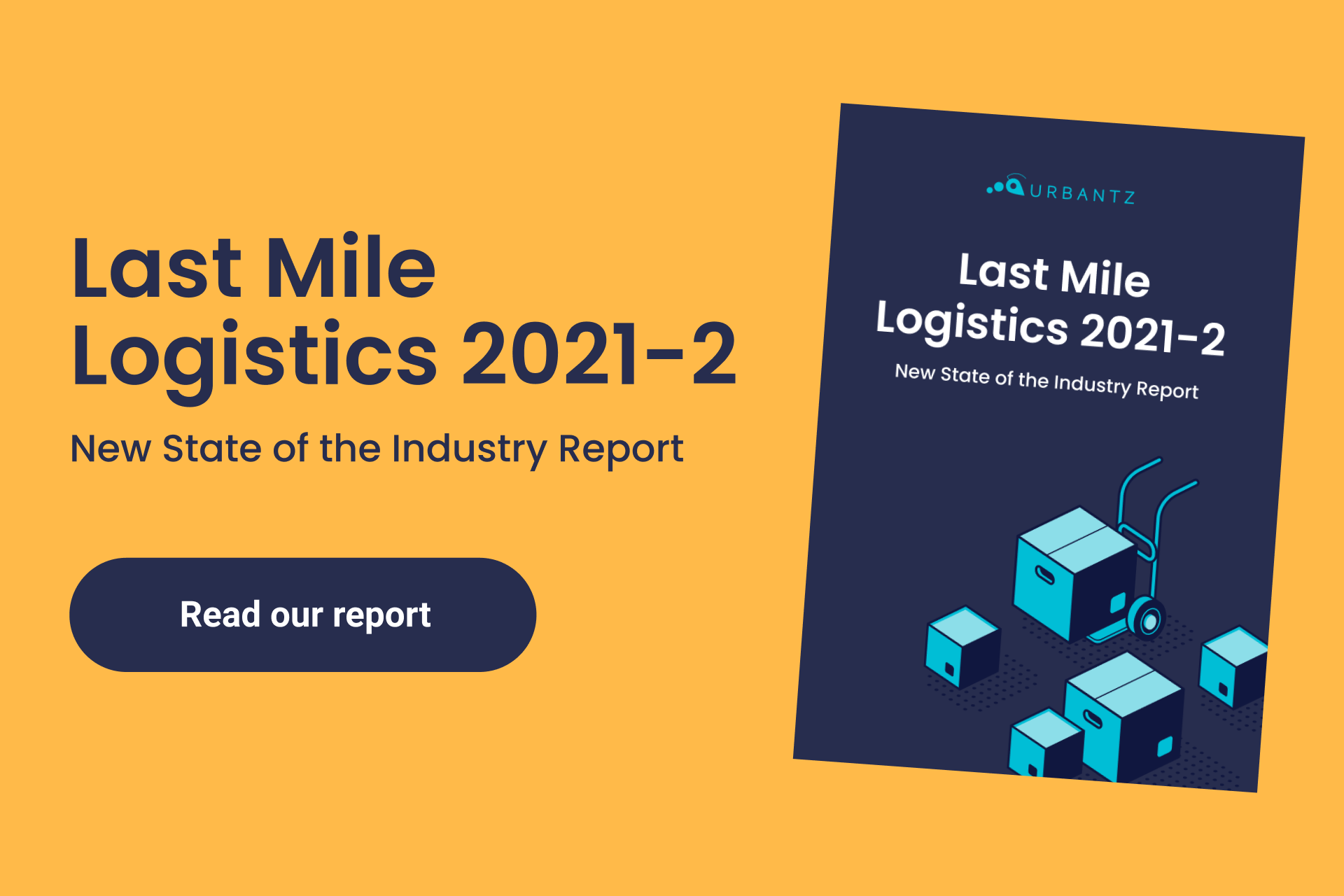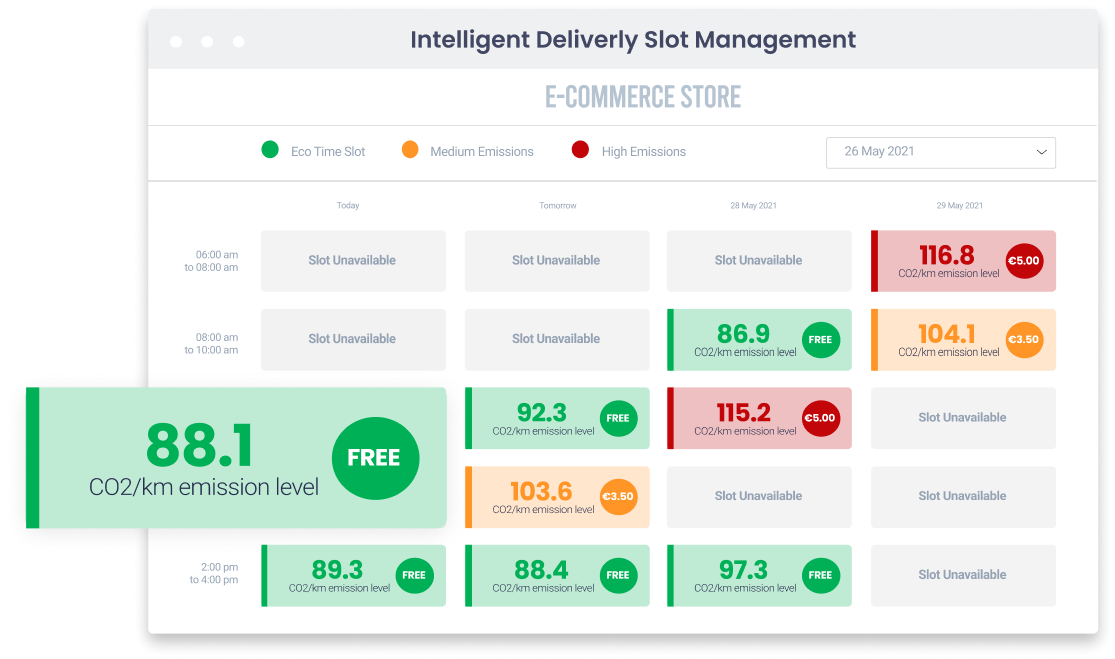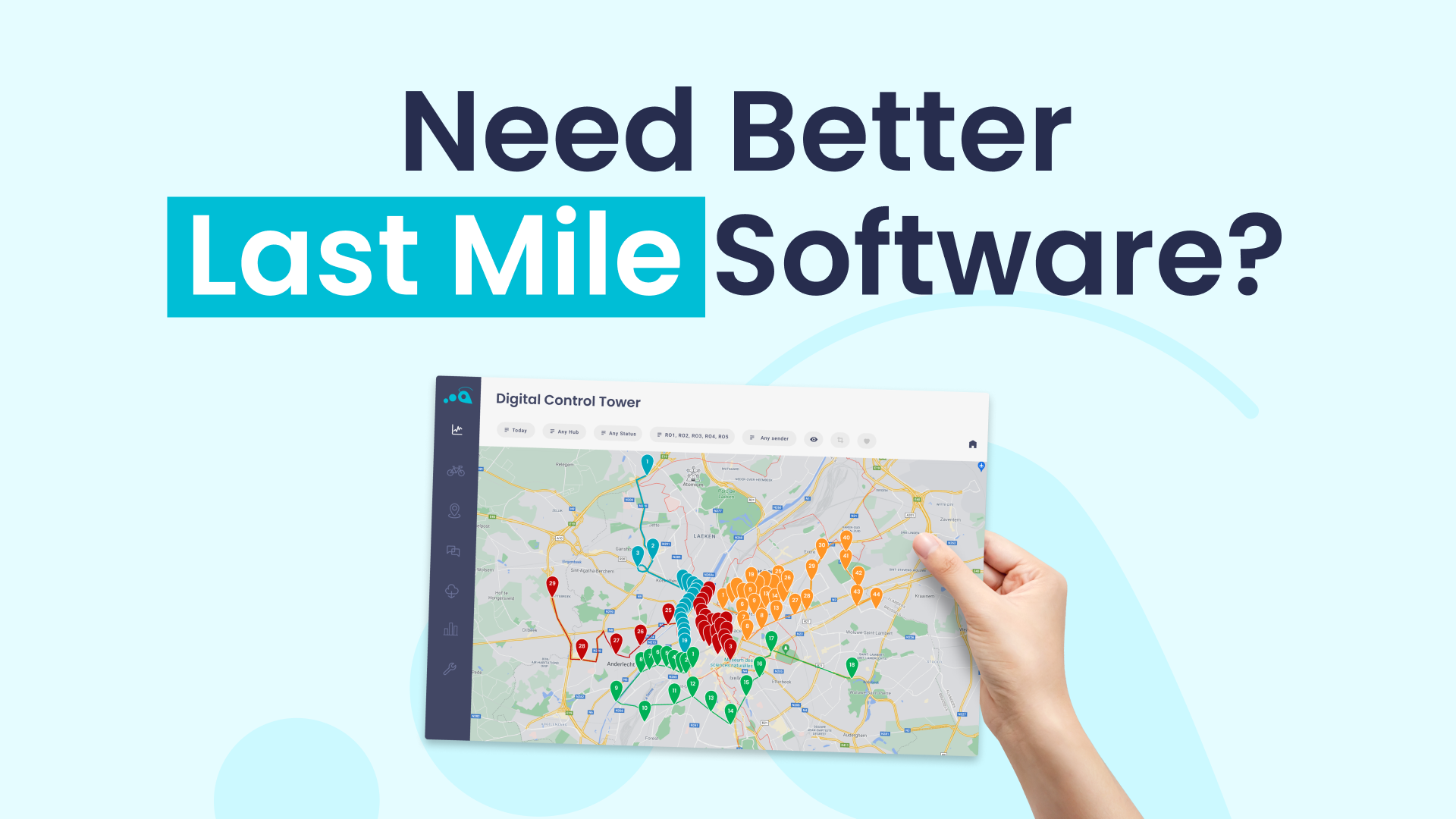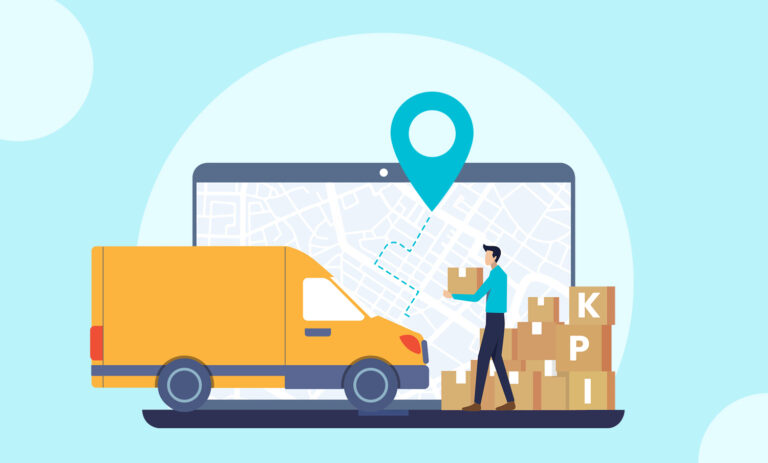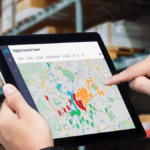


Sustainable logistics is one of the most pressing topics facing the retailers and carriers today.
In the face of growing legislation, changing consumer behaviour and pressing environmental concerns, it’s never been more important to track and lower your last mile emissions. Easier said than done, right?
In this article, we’ll consider:
Green logistics challenges around measurement of emissions
What is actually involved in measuring your corporate emissions?
Measuring and managing Scope 1 emissions in the last mile
Example calculation of emissions for a diesel-burning vehicle
3 strategies to reduce your carbon footprint in the last mile
Even a quick look at the headlines and you’ll see plenty of articles about new legislation and corporate initiatives, all with an aim of achieving the fabled ‘net zero’ emissions. Just a few weeks ago, the news was dominated by coverage of COP26.
While consensus was reached among the world’s largest economies on key actions to implement the Paris Agreement, there was fierce debate over whether the key actions go far enough.
As a result, it might seem that reducing carbon emissions is top of the agenda for many organisations in retail and logistics. Especially in the wake of the pandemic and the huge influx it’s brought about in demand for last mile deliveries. After all, more delivery vans on the road means more last mile emissions.
That’s why the World Economic Forum predicts a 78% increase in delivery demand across the 100 largest global cities by 2030, leading to a 36% jump in the number of delivery vehicles congesting roads. And this will, in turn, lead to a 30% increase in emissions and significantly worsen traffic.
Despite this, almost two-thirds (64%) of businesses say they don’t see net zero targets as a high priority after the pandemic. This is according to a recent report from the British Chambers of Commerce. Despite that finding, it also revealed that half (49%) of companies recognise their customers are worried about the environment and understand they need to reflect that in their day-to-day operations and brand image.
Perhaps what is so surprising is that the picture was very different last year. A survey of senior sustainability professionals from 102 companies found that only 2% felt the climate crisis would not have implications for their companies’ sustainability activities in 2020.
So what’s going on here? Why the apparent flip-flopping, and why are companies ultimately giving out mixed messages when it comes to their sustainability priorities and efforts?
Measuring the challenges of green logistics
Part of the issue is the general confusion around how to measure any sustainability initiative and the impact this has on businesses just getting started with their net-zero projects.
The same British Chambers of Commerce report actually revealed that just 1 in 10 businesses are currently measuring their carbon footprint, a figure that only rises to 26% among larger firms.
When it comes to the logistics industry, where emissions are particularly high due to a boom in e-commerce and last mile deliveries, the picture is somewhat more promising. According to a survey by the Foundation for Future Supply Chain, 57% of large carriers currently measure and publish their carbon emissions data. Better, but still not great!
Riding a legislation wave to more sustainable logsitics
Truth be told, companies best be ready for a wakeup call on this as legislation isn’t just being talked about by governments across the globe, it’s already on the horizon. In the EU, proposals are currently tabled that would see shipping added to the carbon trading market, which will put a lot more pressure on retailers and carriers in the form of strict pollution charges designed to encourage greener operations.
In the UK, the government has already enshrined in law a new target to cut emissions by 78% by 2035, something that’s already being felt by retailers and delivery companies. And lest we forget the mandate from The Sustainable Finance Disclosure Regulation (SFDR) who only postponed their requirement for disclosure of supply chain emissions to 2023 because of the pandemic.
New consumer and financing considerations
As if impending legislation wasn’t enough, there are also changing consumer demands to deal with. IBM reported that 8 in 10 people see sustainability as important to their shopping habits, with nearly 6 in 10 willing to change behaviour to reduce their environmental impact.
Companies also benefit from showing a commitment to sustainability – those that disclose their full climate footprint typically enjoy up to 10% lower cost of capital, because they’re seen as trustworthy and more likely to thrive in the future.
Companies with investors to answer to aren’t immune either. According to McKinsey, more investors are asking for companies to reveal their supply chain carbon footprint.
But the question remains. How can retailers and carriers operating in the last mile measure these initiatives so they feel confident in pushing ahead with sustainability efforts and, ultimately, reporting on their green logistics targets to government, investors, shareholders and customers.
Calculating the bigger picture of sustainable logistics
It’s important to understand the full scope of what is required to measure emissions and sustainable logistics initiatives. For the last mile, the biggest impact is the fuel used by delivery vehicles. But one of the biggest challenges of green logistics is ensuring you can also account for your indirect emissions across the whole supply chain.
To make it easier to understand the different categories of emissions, there are a global set of scoping standards and requirements set out by the Greenhouse Gas Protocol (GHG).
There are what are called Scope 1, 2 and 3 emissions. Scope 3 is the one that is the easiest to overlook and the hardest to measure. That’s because it includes ‘all indirect emissions generated by resources not owned or controlled by the company but that the company indirectly impacts in its value chain.’
The GHG has produced a handy diagram to explain the various activities included in each scope, which we’ve reproduced below.
The GHG protocol also usefully defines two main ways of measuring your carbon footprint:
- Spend-based measurement
- Activity-based measurement
They advise that you start with the spend-based approach, which takes the financial value of a purchased good or service and multiplies it by an emission factor – the amount of emissions produced per financial unit – resulting in an estimate of the emissions produced.
From here, you can then go one of three routes to getting a handle on your sustainability initiatives and tackling those green logistics challenges.
1 – Getting a helping hand
The GHG protocol gives a useful framework, but actually working through it can be incredibly daunting. That’s why there are now expert ‘Climate Consultants’ available to offer specific advice and assistance to corporations. They can bring a wealth of knowledge, resources and strategies to companies looking to get serious about measuring their sustainability initiatives and tackling their green logistics challenges.
For a full list of consultants who are accredited by the B Corp Climate Collective, just head over here. One such consultant, Climate Positive Consulting share a bit about the general approach that companies should take:
“Within four to six months, most organisations can come up with a first cut at a climate plan, outlining actions and the areas where more information is needed. The best approach is to have a living plan, which evolves as you implement and get better information, particularly for these long-term climate plans where not all solutions have yet been identified.”
Mindful Chef, a UK-founded food delivery company, is just one of the businesses championing this route too. They worked with ClimatePartner to measure their carbon footprint, conducting a life cycle assessment of six of their most popular recipes and measuring the impact of the ingredients, transportation, processing, packaging, end use and waste.
As Emma Detain, Sustainability Manager at Mindful Chef explains, “The biggest surprises were around the different carbon footprints of ingredients. We knew things like beef would be high, but foods like rice, peppers, and even cauliflowers came out higher than expected. We are now using these results to shape our reduction strategy, so starting with the most material ingredients such as our proteins but also the ingredients we buy in the highest volumes.”
2 – A measurement world beyond spreadsheets
If you fancy getting a bit more hands-on with measuring and tracking your sustainability initiatives, then why not have a go with specialist software, a full list of which can be found on Capterra.
This software is, of course, much more advanced than simple carbon footprint calculators you might find online. But it will stand up to more rigorous scrutiny should you find yourself under the microscope from investors and shareholders.
One such solution is ‘Footprint Manager’ from the Carbon Trust. It provides businesses with a flexible platform for carbon monitoring and reporting, letting them centralise these processes and even linking to SAP and ERP systems in order to save time and avoid manual data entry. It’s been specifically developed for reporting to the GHG Protocol and the Carbon Trust standard so companies can feel safe and secure in the knowledge that it’s fully up to scratch in terms of reporting standards and legislative frameworks.
There’s also Normative’s carbon accounting engine that gathers thousands of data points and calculates your supply chain emissions in a matter of seconds. You can even input activity data from your biggest emitters to further refine your profile and generate those spend-based and activity-based models we mentioned about earlier.
3 – Measuring and managing Scope 1 emissions in the last mile
Let’s look at the direct actions defined by Scope 1 of the GHG and applying it to the last mile specifically.
One of the most important factors to consider here is the fuel usage of your fleets. The emissions from deliveries made by carriers in your delivery network should also be considered, as this will be a key part of your downstream Scope 3 emissions.
Here’s a quick overview of how you can calculate the CO2 emissions from fuel consumption of one of your vehicles.
Example calculation of emissions for a diesel-burning vehicle
- 86.2% of petrol is carbon
- 1 litre of petrol weighs 835g
- 1920g of oxygen is required to combust 1 litre of petrol to CO2.
(835 * 0.862) + 1920 = 2640g CO2 / litre
Typical consumption of 5 litres of petrol per 100km gives you:
(5 * 2640) / 100 = 132g CO2/KM
You can find more on this and similar calculations for petrol, LPG and CNG here.
Automating the process
Calculating and tracking emissions for each of your vehicles can be a laborious process if you do it manually.
With specialist transport management software for the last mile, it’s possible to automate a lot of the process.
One way to do this is with Eco Driving, the new dashboard we’re developing that will give you the means to easily track emissions of your delivery activity across your own internal fleets.
And those of any carrier partners that you integrate into the Urbantz platform.
It is designed to let you track the emissions of every package, route, driver, fleet and carrier. You can then take informed decisions to reduce your CO2 output using the neat visualisations and analytics to see where your last mile emissions are coming from.
Optimising delivery routes for sustainability
The strength of our platform is that you can then easily optimise future delivery allocation and route planning to prefer the most energy-efficient vehicles and carriers, without any manual work.
All you need to do is set rules so the algorithm knows to optimise for the lowest possible CO2 emissions and you’ll immediately see your carbon footprint come tumbling down.
In addition to this, Urbantz helps you improve your first-time delivery success rate through real-time communication between dispatchers, drivers and recipients, further lowering the carbon footprint of your operation.
And the smart scheduling functionality we’re currently building will let you do some cool things to lower your last mile emissions before a parcel has even been loaded into a van.
In short, it lets you display real-time information about available delivery slots within your ecommerce or order management system. A special purpose-built algorithm can then rank slots based on their environmental impact.
So if you already have a confirmed delivery in the area between 10 and 12 on Thursday, you can steer consumers to that slot because a higher drop density means a greener delivery route.
How’s that for a sustainable logistics initiative?

